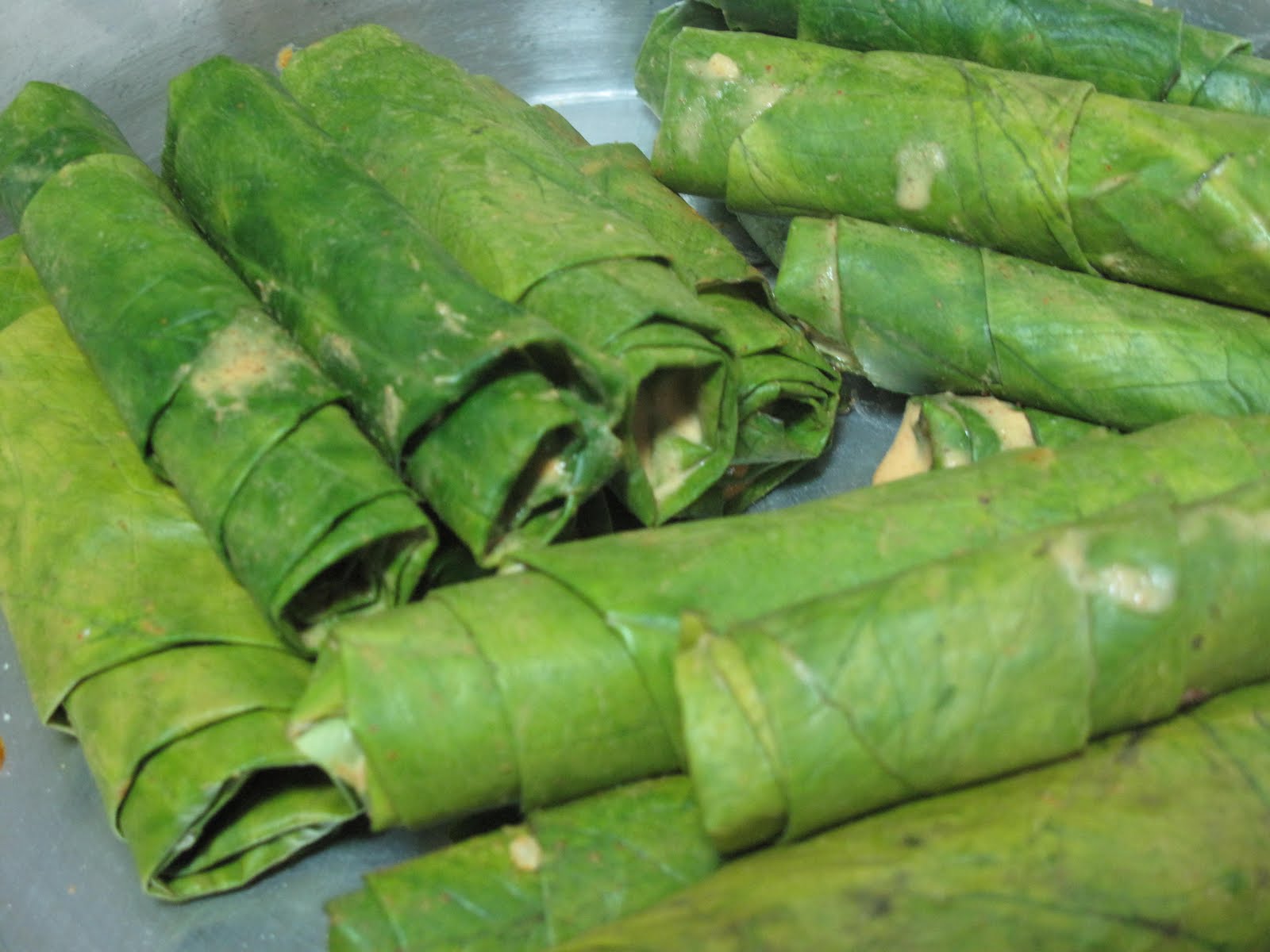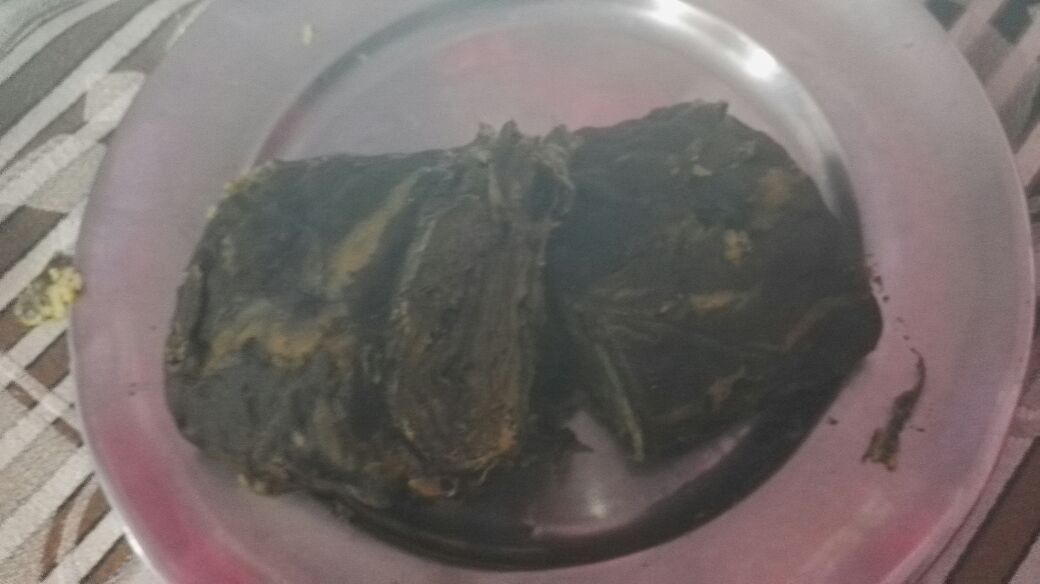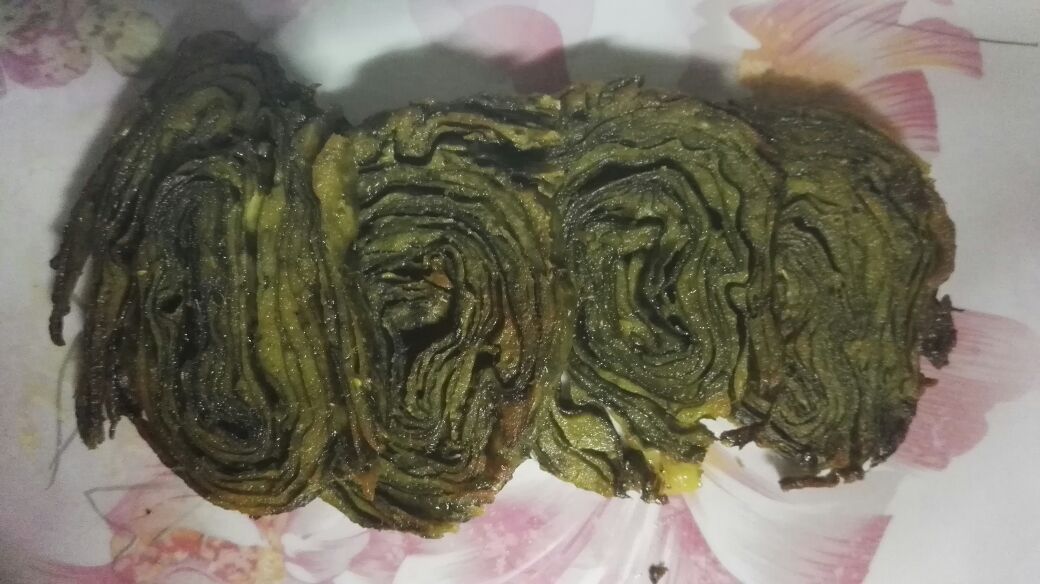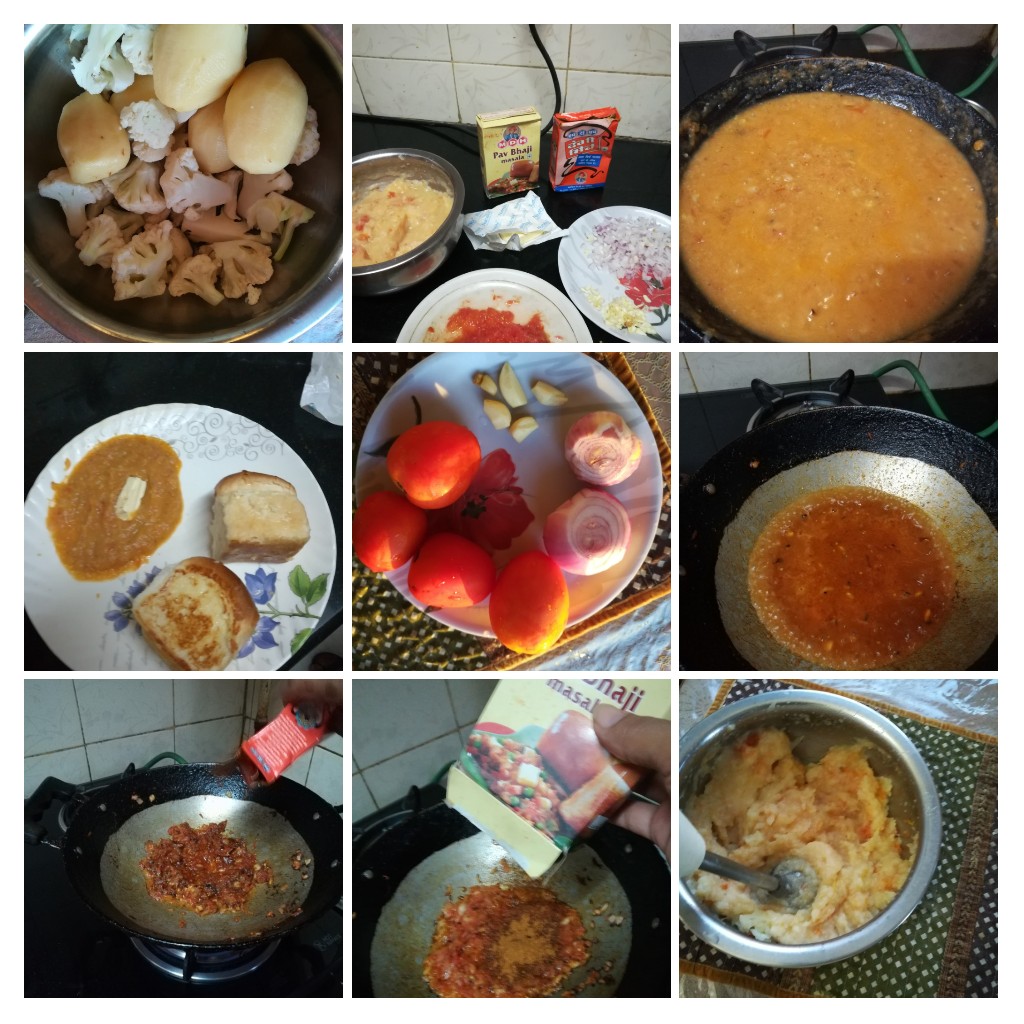Patrode-Himachal Traditional Food
Pathrode, also known as patrode, is a popular and delicious snack in Himachal Pradesh, a state in India. This traditional food item is made from the leaves of Arbi, which is known by various names such as arvi, kachhu, or kachalu in Hindi, and Colocasia (Colocasia esculenta), elephant ear, or taro in English. In the local Himachali language, it is also referred to as “ghandyali.”
Arbi or Colocasia is a root vegetable and one of the oldest cultivated crops known to humanity. The leaves of this plant are used to make Pathrode. The process involves coating the leaves with a flavorful mixture of spices and lentils, which may include ingredients like rice flour, gram flour, tamarind pulp, jaggery, grated coconut, and a variety of aromatic spices. The coated leaves are then rolled and steamed or shallow-fried until cooked.
Taste of Pathrode
The resulting Pathrode is a savory and aromatic snack with a unique texture and taste. It is often enjoyed as a tea-time snack or as a side dish with meals. The combination of spices and the natural flavor of the Colocasia leaves create a delightful culinary experience.
Pathrode is not only a delicious snack but also a reflection of the rich culinary heritage of Himachal Pradesh. Its preparation and consumption have been a part of the local culture for generations, showcasing the traditional food practices of the region.
For those visiting Himachal Pradesh, trying Pathrode can be an opportunity to savor the authentic flavors of the region and appreciate the unique culinary traditions that have been passed down through time.
Also Read: Dev Bhoomi Himachal Pradesh
Recipe of Himachali Patrode
Different parts of the Arbi plant are used to create various dishes, showcasing the versatility of this ingredient. One such recipe involves using gram flour (besan) and Colocasia leaves. The leaves are utilized to wrap a mixture of besan and spices, forming small cylindrical or rolled shapes. These rolls are then steamed and sliced before being either deep-fried or shallow-fried.
The preparation begins by combining besan and spices to create a flavorful filling. The Colocasia leaves are carefully wrapped around this mixture, creating compact rolls. To cook them, the rolls are steamed until they are cooked through. After steaming, the rolls are cooled and cut into slices of desired thickness. These slices can be further cooked by deep-frying or shallow-frying them, resulting in a crispy and flavorful snack.
By combining the natural flavors of the Colocasia leaves with the aromatic spices and the nutty taste of besan, this recipe offers a unique blend of textures and flavors. The steaming process ensures the rolls are cooked thoroughly and the flavors meld together. The final step of frying adds an additional layer of texture and enhances the overall taste of the dish.
This recipe highlights the culinary creativity and adaptability in utilizing different parts of the Arbi plant. By incorporating besan and spices, the rolls become a delectable snack or side dish, offering a satisfying experience for those who enjoy this traditional delicacy.
People from western India make a similar dish called Patra. Pathrode or patrode is also familiar by the name of Patravadi, Chembilai Palaharam or Patravade in southern part of the country where they use rice instead of besan.
Ingredients needed for making Pathrode/Patrode
Preparation time: 1 hour, Cooking time: 1 hour, Servings: 6, measuring cup:250ml
- Medium size Colocasia leaves – 24
- Besan -2 cups
- 6 – 8 red chilli (medium size)
- Coriander powder 2 tsp
- Cumin or jeera powder 2 tsp
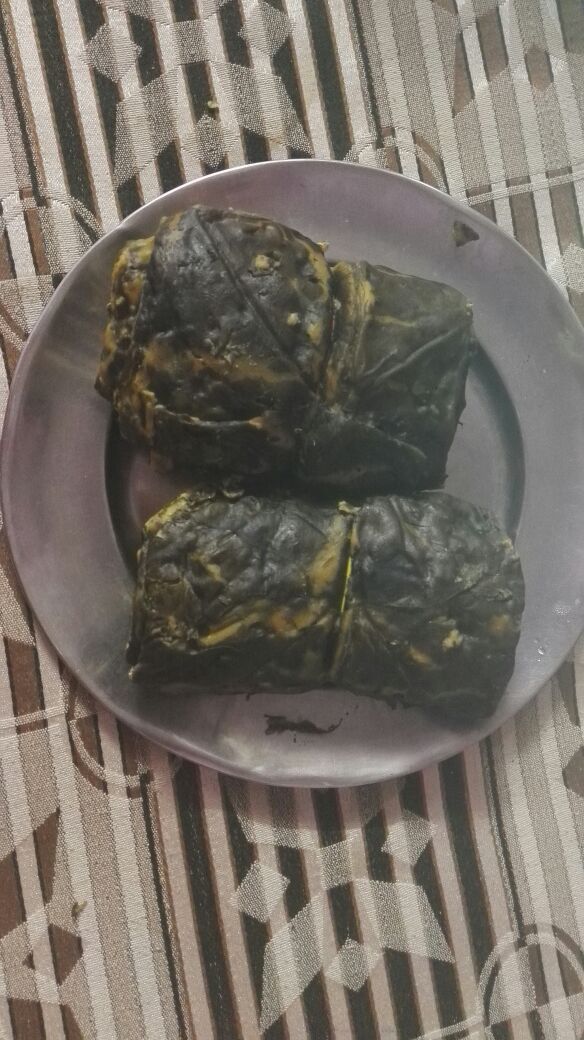
- Haldi/ turmeric 2 tsp
- Red chilli powder 1 tsp
- Heeng/Asfoedeta 1 pinch
- Salt as per your taste
- Water 2 glasses for steaming leaves and mixing besan paste
- Oil for frying
Steps involved in making Patode/Patrode
- Take fresh medium size edible leaves. Wash them properly. Strip the stem and center of leaf.
- Prepare thick batter (Dosa batter like consistency) – take besan in a container add all ingredient mentioned above by adjusting amount of water.
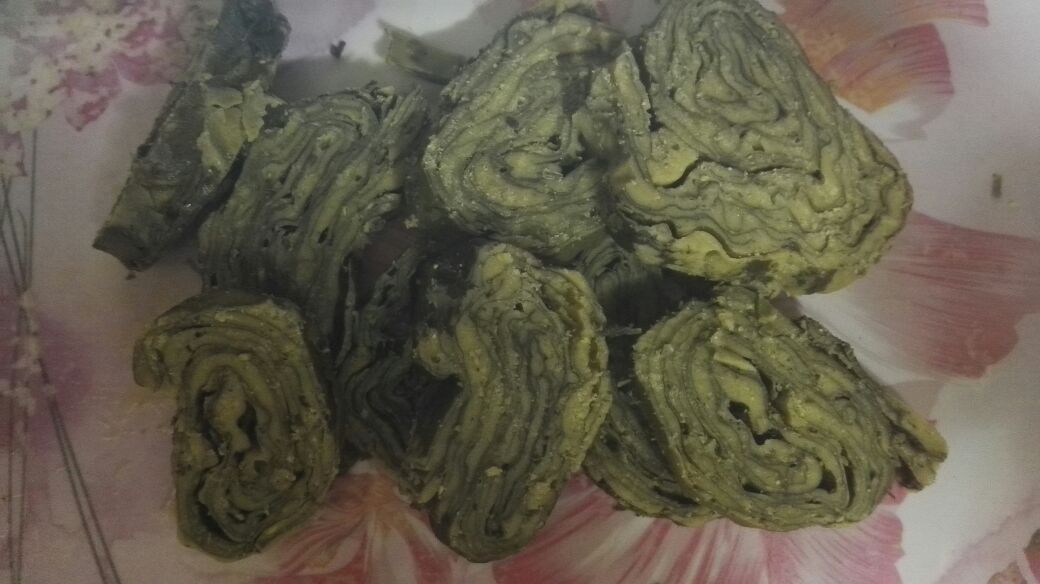
- Now on a clean surface keep a big colocasia leaf upside down. Apply the thick batter all over the leaf. Keep another leaf and again apply paste. Layer with atleast three leaves.
- Now fold the leaves from both sides. Apply the paste again.
- Roll the layered leaves from one side to other side to form a cylindrical shape or rolls
- Place two glasses of water in pressure cooker, boil the water, place idli maker and place rolls over it , steam them for forty five minutes on medium heat.
- Once they are cooked, let them cool, slice the rolls in vertical direction. You can go for shallow fry or deep fry.
Quick Tips while making Patode
- Alocasia and Colocasia leaves are quite similar to each other. Remember rule of thumb, if the leaves point up, the plant is probably an Alocasia; if the leaves point down, it’s probably a Colocasia
- Only few varieties of Colocasia leaves (Kachaloo) are considered as edible. Even edible varieties of leaves may cause itching in mouth and throat if consumed a raw or half cooked unedible varieties may itch. Leaves contain calcium oxalate crystals and other compounds which cause irritation and itching that are rendered harmless by cooking and by keeping the leaves in cold water overnight and disposing of the water
- Calcium oxalate is highly insoluble and lead to formation of kidney stones. It has been recommended to consume calcium-rich foods like milk together with Arbi
- Wear gloves if you have sensitive skin. Even if you don’t have sensitive skin but than too you can wear gloves because the crystals sting after a while. I don’t prefer to use gloves , so I scrub my hands with some mustard oil
- Instead of besan, we can use 250 gms chana Dal soaked for four to five hours and grinded
- If the leaves are not cooked properly, they might itch while eating. So do not compromise on cooking time
- Instead of besan, we can use grinded 250 gms soaked chana ki daal for four to five hours
- You can wrap Arbi rolls in turmeric leaves and the boil. Turmeric leaves, also are used extensively as aromatic herbs. Turmeric leaves are purported to improve digestion and reduce gas and bloating
- You can cut rolls into slices as per requirement, keep rest in refrigerator which can be used till three to four days
Health Benefits of Himachali Patode
- Besan used in patode is rich in protein
- Turmeric used in patode helps in curing gas and bloating problems in body
- Patode reduces your cholestrol level
- Patode helps in weight loss problems
- You can cure your anaemia problem with patode
- Patode is good for skin
- Patode helps in sperm production
